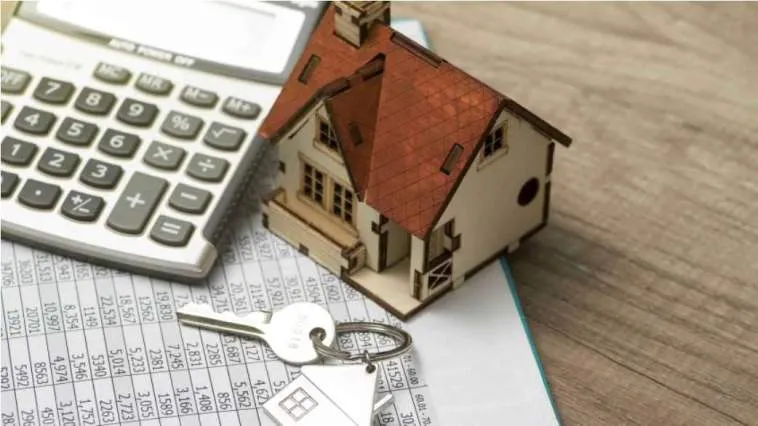(Kiplinger) Good news, house hunters: Home prices have started to cool. Prices are still rising, but annual home price appreciation slowed from April to June, with June marking the strongest single-month deceleration in home price growth ever, according to Black Knight, a mortgage data analytics firm.
Although mortgage rates have been in a state of flux this year, the 30-year fixed-rate average ballooned from 3.2% in January to 5.3% at the end of July, according to Freddie Mac. Consequently, the national median mortgage payment hit $1,893 in June, a $509 increase since the beginning of the year, says the Mortgage Bankers Association.
Fears of inflation are stoking higher mortgage rates, even though geopolitical tensions and fears of a recession tend to drag mortgage rates lower, says Odeta Kushi, deputy chief economist at First American Financial Corp., a title, settlement and risk solutions provider based in Santa Ana, Calif. “The Federal Reserve has been reducing its balance sheet and raising its benchmark rate in an effort to tame inflation,” she says. “That has resulted in higher 10-year Treasury yields, which has resulted in higher mortgage rates.”
Those rising mortgage rates are pushing some buyers out of the market and leading some others to back out of deals—approximately 60,000 home-purchase agreements nationwide fell through in June, Redfin data found. The brokerage also released a study in June that found a home buyer on a $2,500 monthly housing budget had lost nearly $120,000 in home-purchase power since the end of 2022.
First-time home buyers are bearing the brunt of climbing mortgage rates, Kushi says: “It’s getting very difficult for first-time buyers to enter the market, largely because they don’t have money that existing homeowners get from the sale of their current home to fund their next home purchase.”
Ralph DiBugnara, a senior vice president at Cardinal Financial, a national mortgage lender headquartered in Scottsdale, Ariz., agrees that it’s a challenging market for first-time buyers. “I’m seeing some buyers pull out of the market because they can no longer afford a home loan,” he says. “I’m also seeing a rise in the number of people who are getting cosigners, and I’m seeing a lot of buyers lowering their price range.”
There’s also a large swath of buyers who are reassessing whether now is the right time for them to purchase a home. “A lot of buyers have moved onto the sidelines and are taking a wait-and-see approach because of mortgage-rate increases,” says Bill Gassett, a real estate agent with Re/Max in Hopkinton, Mass.
How to Nab a Low Rate
Looking to purchase a home in this market? Take these steps to qualify for the best mortgage rates.
Increase your down payment. To qualify for the lowest rates on a conventional loan backed by Fannie Mae or Freddie Mac—the nation’s two largest mortgage buyers—you’ll need a 20% down payment, says Melissa Cohn, a regional vice president at William Raveis Mortgage, a national lender headquartered in Shelton, Conn. “The bigger your down payment, the better the rate,” Cohn says.
Need a little help piecing together a bigger down payment? DiBugnara recommends looking into national and local down payment assistance programs. You can research eligibility requirements for thousands of down payment assistance programs at DownPaymentResource.com.
Raise your credit score. Generally, consumers need a FICO score of 760 or higher to be eligible for the lowest mortgage rates on a conforming loan, says John Ulzheimer, a credit expert and author of The Smart Consumer’s Guide to Good Credit. A conforming loan is a loan that follows guidelines set by Fannie Mae and Freddie Mac; currently, the conforming-loan limit in most areas of the country is $647,200.
You may be able to get a free credit score estimate through your bank or credit card issuer, or from a website such as Credit Sesame or Credit Karma—or use MyFICO’s credit score estimator tool. If your credit score needs a boost, there are steps you can take to give it a quick lift. However, your best strategy will depend on why your score is lagging.
“Paying down some of your credit card debts can yield a higher FICO score in as little as two weeks,” says Ulzheimer, pointing out that your credit-utilization ratio—the amount you owe on your credit cards, divided by your card limits—makes up a significant percentage of your FICO score.
A good rule of thumb: Keep your credit-utilization ratio below 30%.
It’s also a good idea to check your credit reports for errors. With identity theft at an all-time high, “make sure all the information on your report actually belongs to you,” says Ulzheimer. “Someone could have opened a credit card in your name and run up a significant amount of debt.”
Until the end of this year, you can get a free credit report weekly from Equifax, Experian and TransUnion—the three major credit reporting agencies—at . If you spot an error, alert each agency immediately.






